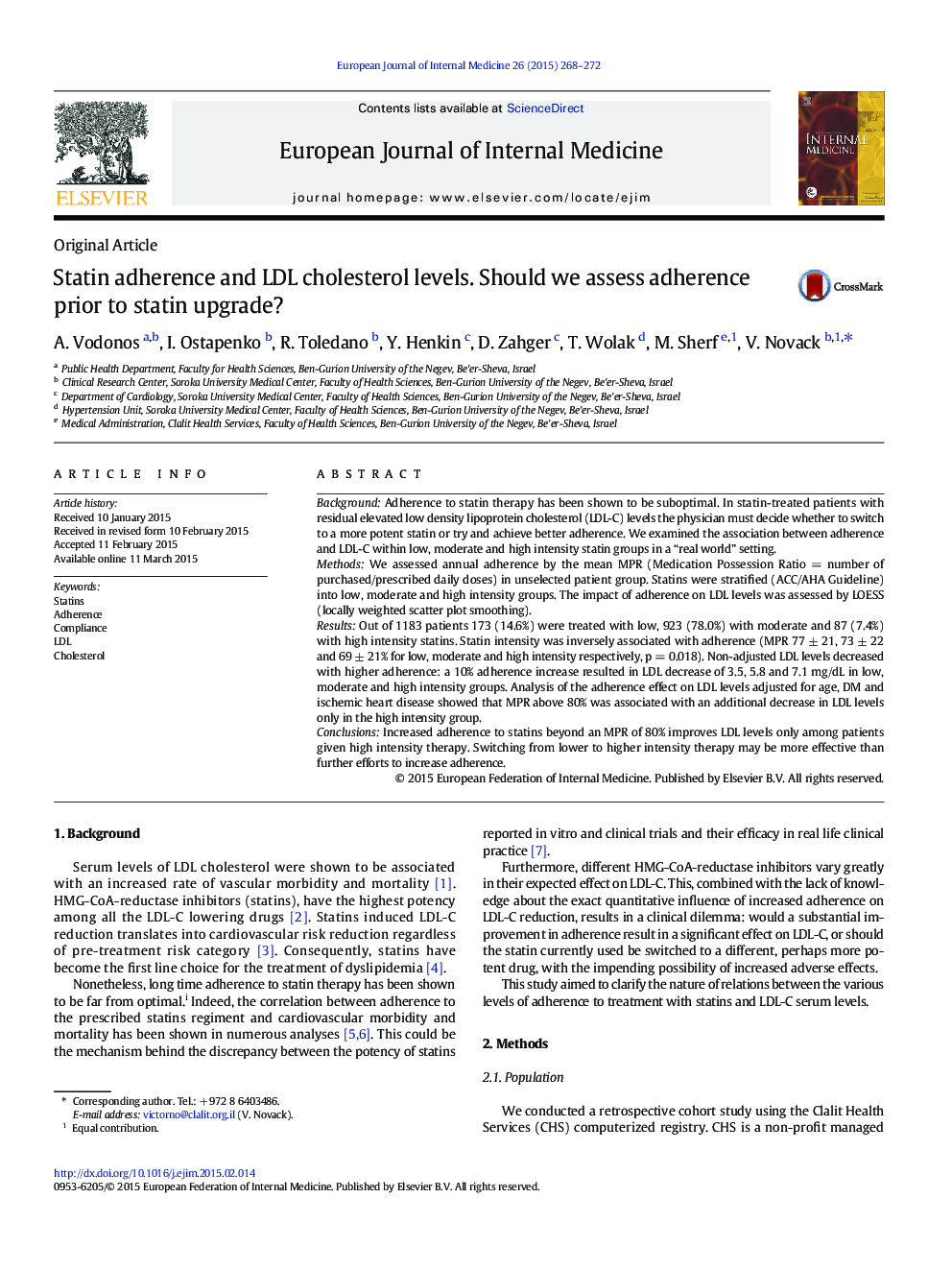| Article ID | Journal | Published Year | Pages | File Type |
|---|---|---|---|---|
| 3466309 | European Journal of Internal Medicine | 2015 | 5 Pages |
•To reduce LDL should we improve adherence or switch to a more potent statin?•10% Adherence change decreases LDL by 3–7 mg/dL, depending on statin intensity.•Increase in adherence > 80% further changes LDL only for high intensity statins.•Switch to a potent statin may be more feasible than the efforts to increase adherence.
BackgroundAdherence to statin therapy has been shown to be suboptimal. In statin-treated patients with residual elevated low density lipoprotein cholesterol (LDL-C) levels the physician must decide whether to switch to a more potent statin or try and achieve better adherence. We examined the association between adherence and LDL-C within low, moderate and high intensity statin groups in a “real world” setting.MethodsWe assessed annual adherence by the mean MPR (Medication Possession Ratio = number of purchased/prescribed daily doses) in unselected patient group. Statins were stratified (ACC/AHA Guideline) into low, moderate and high intensity groups. The impact of adherence on LDL levels was assessed by LOESS (locally weighted scatter plot smoothing).ResultsOut of 1183 patients 173 (14.6%) were treated with low, 923 (78.0%) with moderate and 87 (7.4%) with high intensity statins. Statin intensity was inversely associated with adherence (MPR 77 ± 21, 73 ± 22 and 69 ± 21% for low, moderate and high intensity respectively, p = 0.018). Non-adjusted LDL levels decreased with higher adherence: a 10% adherence increase resulted in LDL decrease of 3.5, 5.8 and 7.1 mg/dL in low, moderate and high intensity groups. Analysis of the adherence effect on LDL levels adjusted for age, DM and ischemic heart disease showed that MPR above 80% was associated with an additional decrease in LDL levels only in the high intensity group.ConclusionsIncreased adherence to statins beyond an MPR of 80% improves LDL levels only among patients given high intensity therapy. Switching from lower to higher intensity therapy may be more effective than further efforts to increase adherence.
